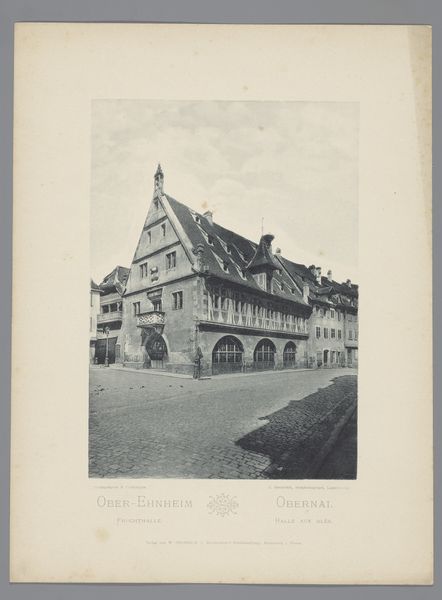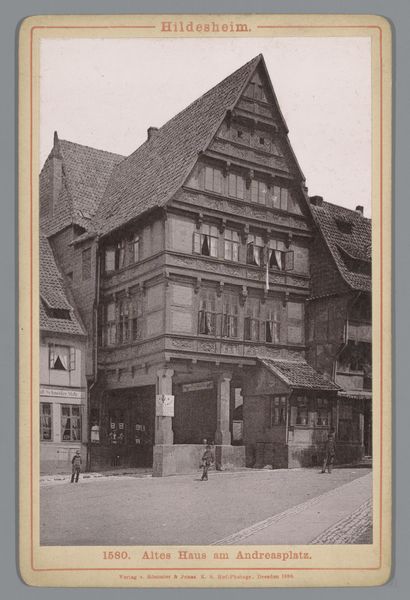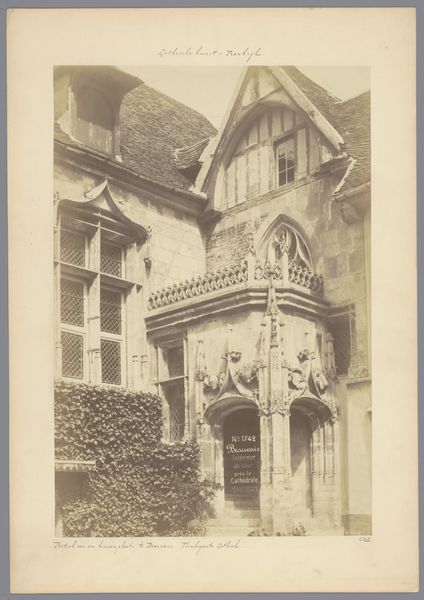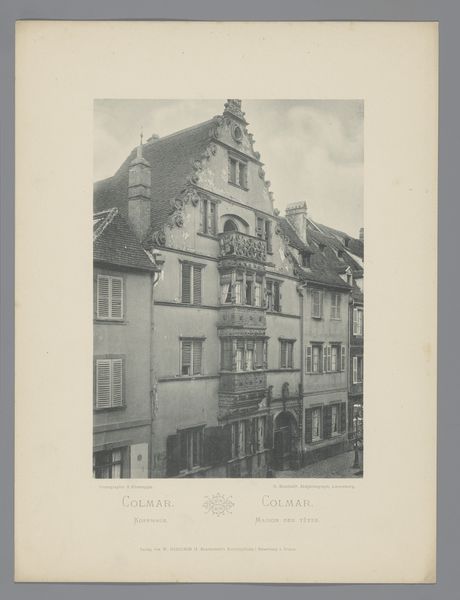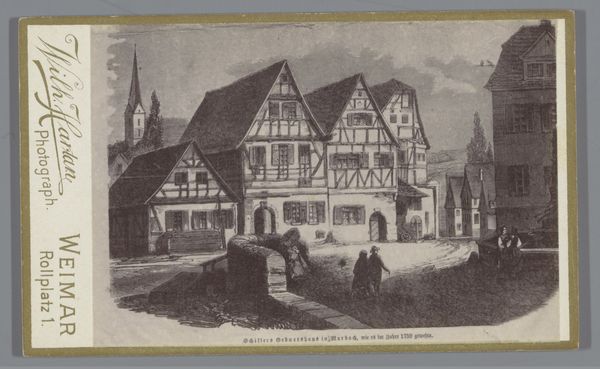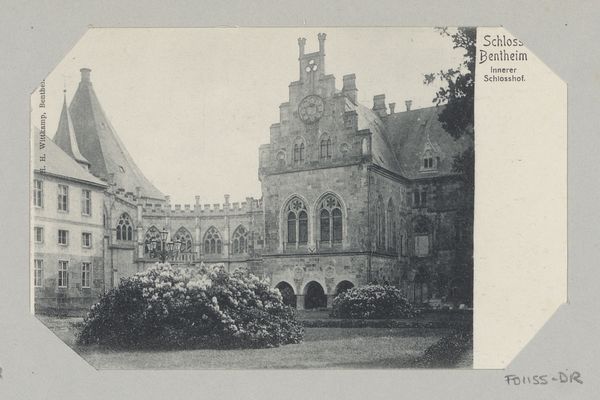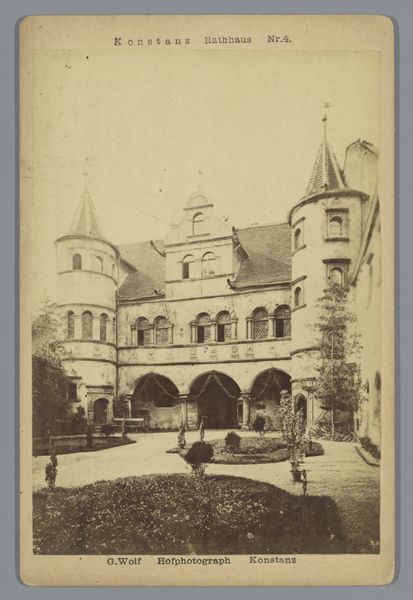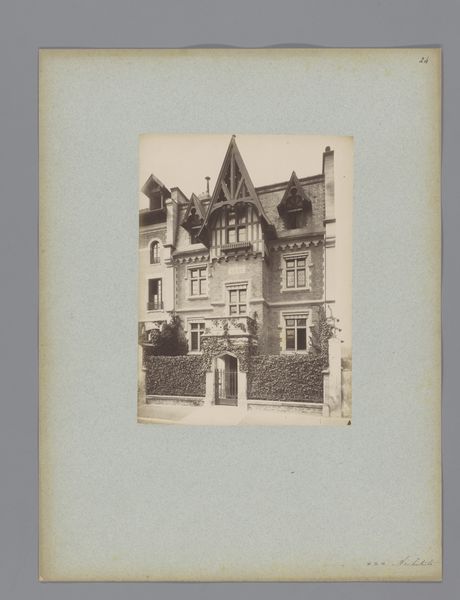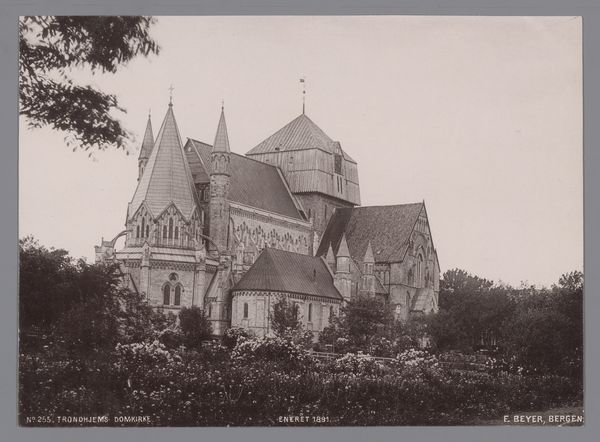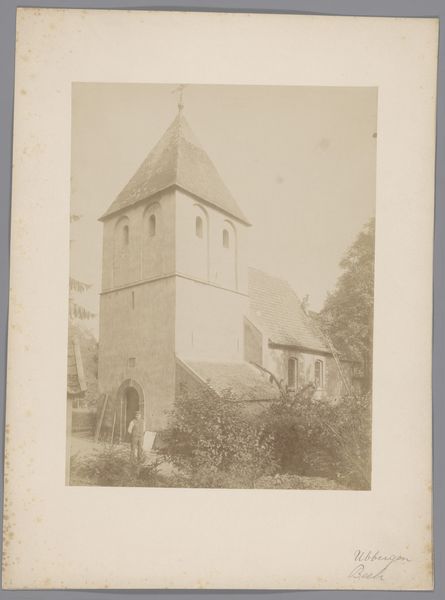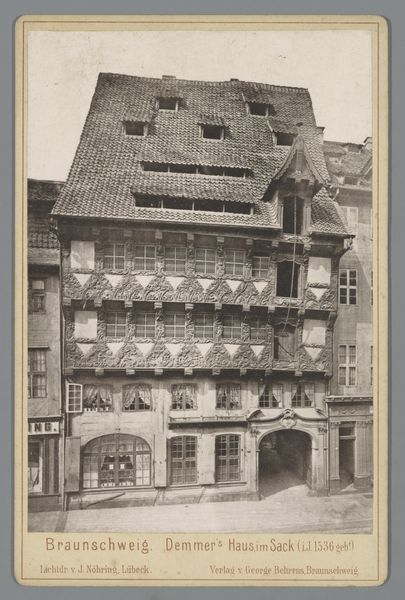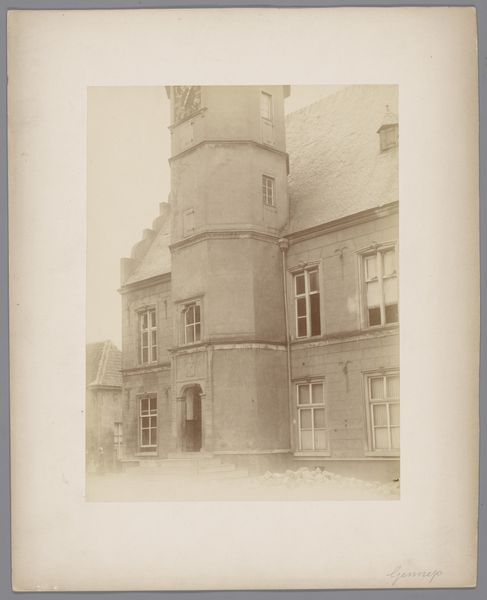
print, photography, site-specific, architecture
#
medieval
# print
#
landscape
#
photography
#
site-specific
#
architecture
Dimensions: height 146 mm, width 97 mm
Copyright: Rijks Museum: Open Domain
Curator: Let's turn our attention to this photograph, "Exterieur van het lavatorium van de Abdij van Maulbronn," taken sometime between 1895 and 1900. It’s a compelling architectural study. Editor: My initial thought is the play of light here. It’s somber, yet the architectural details still manage to convey an air of majesty. What story does this place tell, through its forms? Curator: The story is one of labor, quite literally. We're looking at a postcard print, a reproducible medium. The Abbey at Maulbronn, of course, signifies communal work, manual labor undertaken as part of a spiritual discipline. Photography here documents this historical labor. Editor: And visually, the high gothic windows and the timber framework convey sacred geometries; the pointed arches and repetitive patterns elevate the gaze. I wonder, was this intended as a reminder of order, divine presence reflected in material structures? Curator: Perhaps, but think of the act of taking this photo, reproducing it. It's democratizing access to a site of religious work and discipline through commodity production. The image enters circulation, shedding some of its original aura in favor of wider consumption. Editor: But doesn't the photograph still hint at the rituals and the rhythms of monastic life within those walls? The starkness reminds me of other photographic archives of religious spaces that function almost as reliquaries. They distill something essential about a past world. Curator: A distilled world reproduced, yes, for mass consumption. Consider the context of photographic prints around the turn of the century and their relationship to tourism, to expanding middle-class consumption, this photograph of architecture speaks volumes about how cultural experiences get packaged and traded. Editor: That’s a fascinating perspective, especially about how we frame history through imagery. The act of repetition and image dissemination further layers new stories atop old symbols and makes their impact continue. Curator: Indeed. These mass-produced photographic images highlight accessibility but also raise key points about commercializing memory through images. Editor: It's definitely an intersection of labor, history, and faith rendered both material and symbolically potent. Curator: Precisely, and that's why considering the conditions of image-making, not just subject or its inherent symbolism, gives us a more complex perspective.
Comments
No comments
Be the first to comment and join the conversation on the ultimate creative platform.
